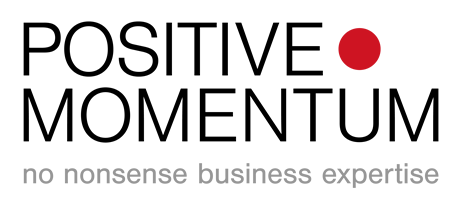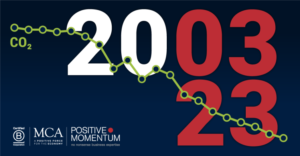Photo by Elena Koycheva on Unsplash
One of the most common questions that I have heard round Board tables recently is “How can we possibly predict the future given what has happened to our company and the world over the last 12 months?”. I get it, it seems tricky. I was a CFO when the dot-com bubble burst in the late 1990s and also during the financial crisis of 2007 – 2008. It was as difficult then as it is now to predict the future.
Companies do not actually have a dedicated Chief Prediction Officer and that’s my point. It is in every member of the C suite’s remit to contribute in this area. After all it will be the C suite’s leadership, messaging, cadence and “can-do” attitude that will make all the difference to the future of businesses in these rather unpredictable times.
To be clear, I am not suggesting that you suddenly become Mystic Meg and I certainly don’t have a crystal ball, but I sit on the Board of a company which has been around since 1879 and, in uncertain times, these three guiding principles are just as relevant today as they were back in 1879.
Ensure time and resources are adequately allocated to creating a “Prediction Portfolio”
A prediction is a statement about the future. It is a guess, sometimes based on facts or evidence, but not always. The word “prediction” can be polarising. It conjures up threat, attraction and avoidance. Few will debate that being able to look into the future is essential and yet businesses do not do enough of it. They can easily be derailed by the forces of the status quo.
Making predictions should not just happen within the confines of the annual planning cycle. The reality is that making predictions can feel messy relative to the fixed structures most businesses follow around budgeting, forecasting and planning. It is driven by what is happening in the marketplace, by customers’ needs, and, as the world has experienced over these last 12 months, by events beyond our control.
My first recommendation is that when a C suite comes up with initiatives, they should form part of a “Prediction Portfolio”. Each prediction in the portfolio will have a different degree of risk, reward, likelihood of occurrence and will play out over different points in time. We know that a balanced portfolio mitigates risks and acknowledges that in reality not all predictions will come to pass and probably not at the pre-planned time. So, by creating a broad “Prediction Portfolio”, businesses will be able to look to the future with greater confidence and be better placed to succeed. There is no need to purchase a magic forecasting wand.
Use common sense and adopt relevant metrics
Early in my CFO career I was given some advice that has stuck with me to this day. I was presenting a financial forecast to the rest of the C suite and was sharing loads of analysis which went out over 3 years and included figures down to the last penny. When I reached the analysis part of the presentation, the CEO asked me to move swiftly on. I was flabbergasted as I was so proud of the detail I had pulled together. When I asked him afterwards why he had done this, he answered, “Don’t seek a level of precision that cannot be possible when you are looking into the future.”
When I am asked now about how best to predict the future, I suggest adopting a common-sense approach, particularly given the events of the last 12 months when core benchmark metrics have been skewed and knocked out of shape.
It is so important is to ask the right questions. Smart questions answered in fast test-and-learn planning cycles can help the C suite to derive the relevant metrics while giving the “Prediction Portfolio” a great chance of success.
Also be confident in relying on judgement where facts simply do not exist, seek benchmarks from other sectors or markets and accept “good enough” data that can be refined along the way. I realise that there is comfort in data, particularly for CFOs. It is reassuring to see numbers beautifully presented in graphs, charts or in organised columns and rows with optimistic trends demonstrating future success highlighted along the way.
Predicting the future can be messy and therefore it is vital to explore and dig into the insights and the key metrics that matter that are important signals of future success. KPIs, or Key Predictive Indicators, as I sometimes refer to them, form part of a C suite’s early warning radar system and are an important ingredient in the make-up of the “Prediction Portfolio”.
Focus on four key areas – becoming a prediction enabler, talent strategy, tech innovation and stakeholder requirements
While CFOs are well-positioned to be prediction enablers, they must embrace the reality that to identify and shape the future requires approaches to financial management that may feel at odds with their established ways of operating. It therefore makes sense for the whole C suite to step up, become Chief Prediction Officers, and get behind the adoption of a fit-for-future methodology which is essential to nurturing new ideas and enabling them to become commercial successes.
Perhaps think about reviewing the talent strategy for your business to encourage the strengthening of skills in customer insight, data analytics and trend analysis. This will enable functions to be productive, highly valued thought partners to the C suite and your other colleagues working on future initiatives.
Make it simple and straightforward to plan different future scenarios. Augment the talent strategy with technology capabilities that provide ready access to useable and reliable data that enables the various teams to increase cadence and get from data to insight to future action planning quickly.
A key skill set of a Chief Prediction Officer is finding the right balance between the future requirements of shareholders and those of the other stakeholders in the business — customers, vendors, partners and employees.
In summary
On numerous occasions recently I have been party to conversations where the CEO has concluded that “We are not going back to the way things were pre-2020”. As a result, I am often asked as an ex-CFO whether it is a good idea to have the CFO as the only Chief Prediction Officer in the business.
My answer is always “No”. While I am the first to acknowledge that models and forecasts rest within the orbit of the CFO, predicting the future is core to any business’s strategy, particularly in this rapidly changing, uncertain and unpredictable world. Future thinking should not happen in a silo. Every member of the C suite should have skin in the future of their business.








